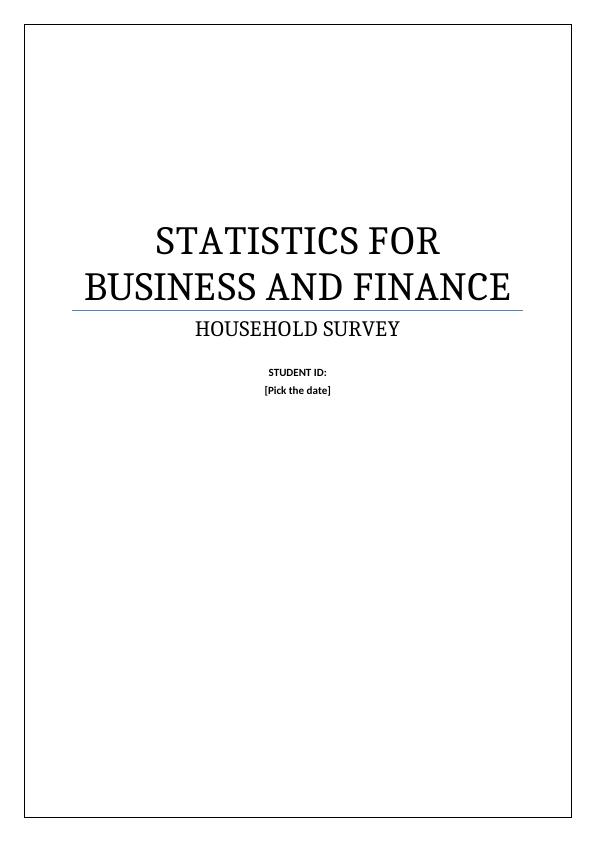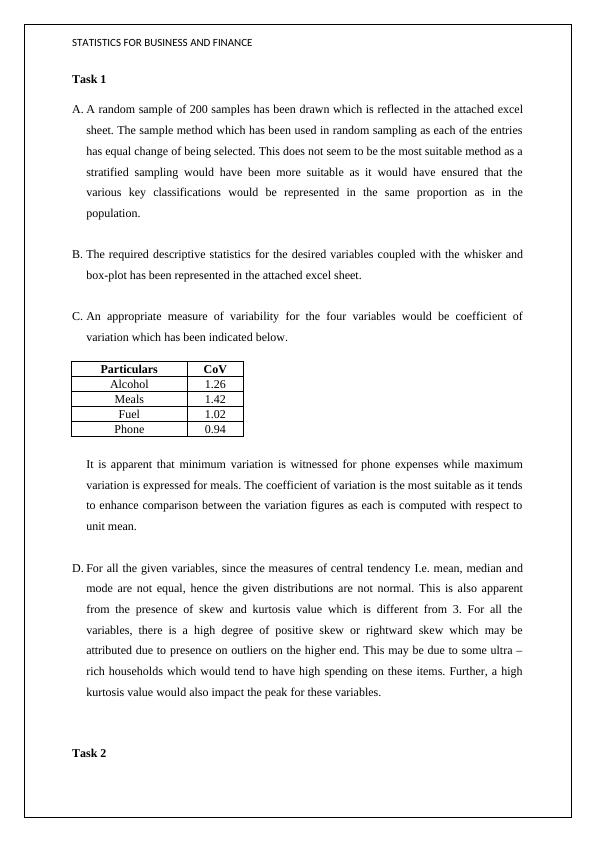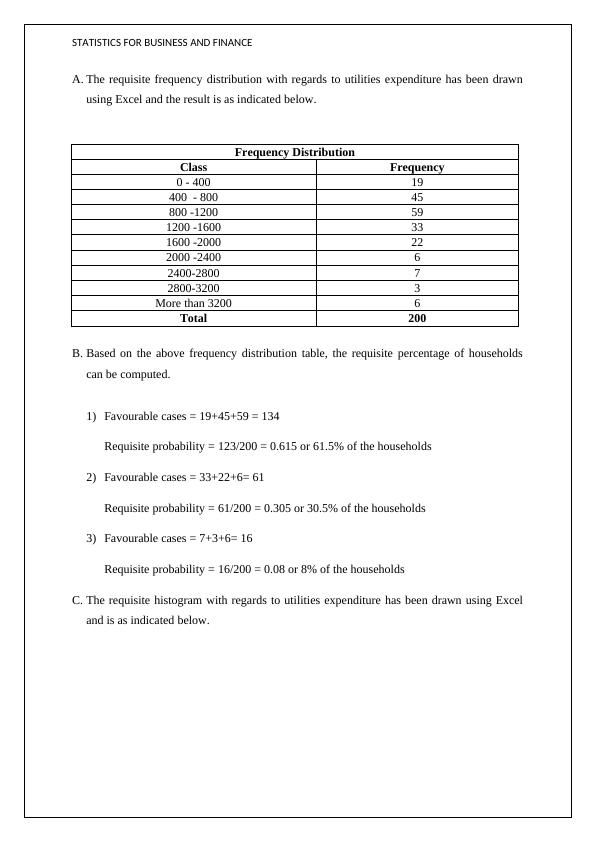BUS5SBF - Statistics For Business and Finance, Question/Answer
6 Pages1044 Words204 Views
La Trobe University
Statistics for Business and Finance (BUS5SBF)
Added on 2020-03-04
About This Document
In the BUS5SBF Question/Answer, we will discuss Statistics For Business and Finance, we also cover Household Survey. The sample method which has been used in random sampling as each of the entries has equal change of being selected. This does not seem to be the most suitable method as a stratified sampling would have been more suitable as it would have ensured that the various key classifications would be represented in the same proportion as in the population.
BUS5SBF - Statistics For Business and Finance, Question/Answer
La Trobe University
Statistics for Business and Finance (BUS5SBF)
Added on 2020-03-04
ShareRelated Documents
End of preview
Want to access all the pages? Upload your documents or become a member.
BUS5SBF - Statistics for Business and Finance (Doc)
|9
|1028
|149
StAT2000-Quantitative Analysis of a sample of 400 US students working in US
|9
|1546
|219
Statistics for Business and Finance - Analysing Household Data
|11
|1105
|101
Financial Statistics
|10
|1354
|65
Simple Random Sampling Method - Statistics Assignment
|13
|1682
|124
Sampling Technique and Data Analysis
|9
|1346
|69



